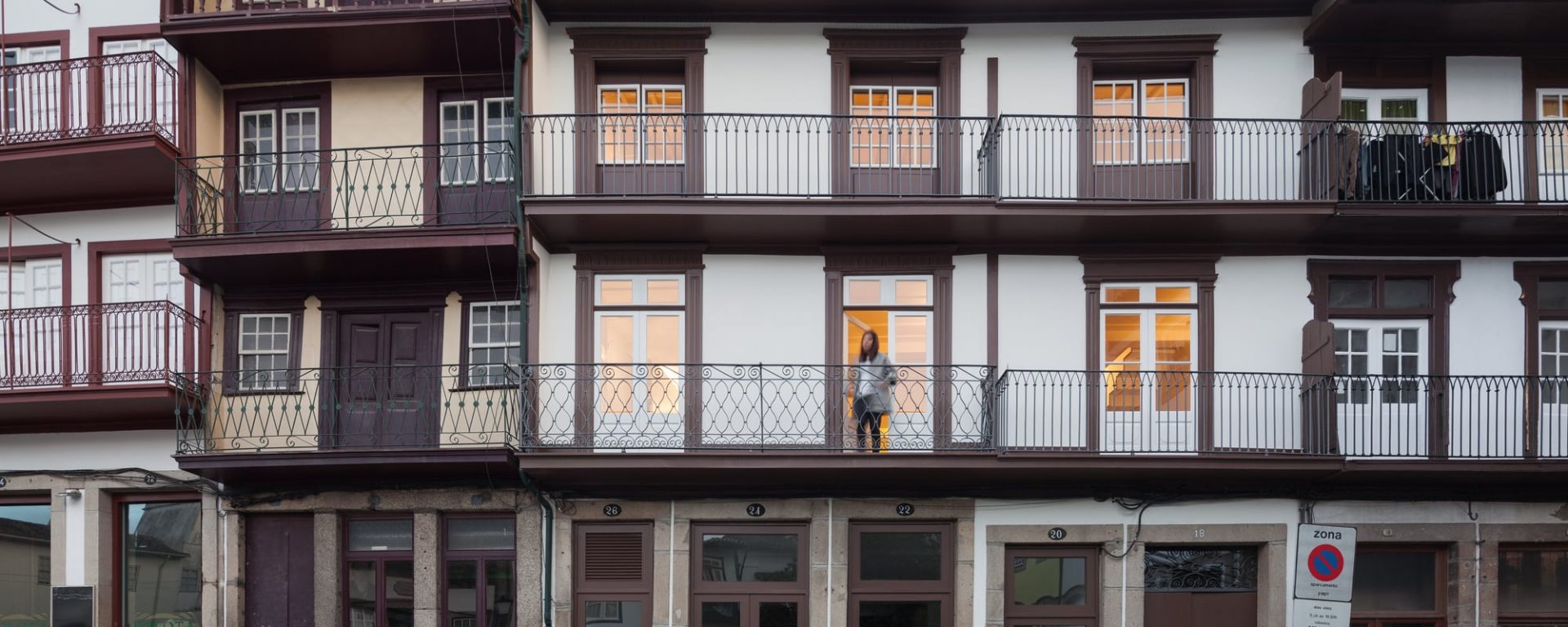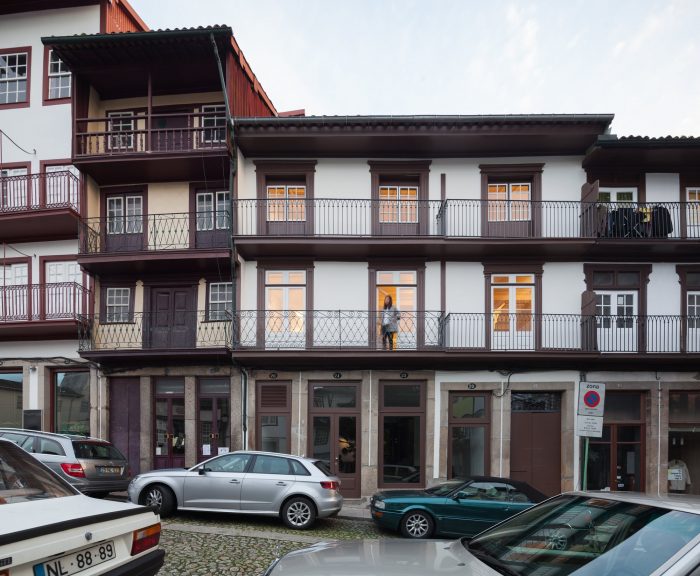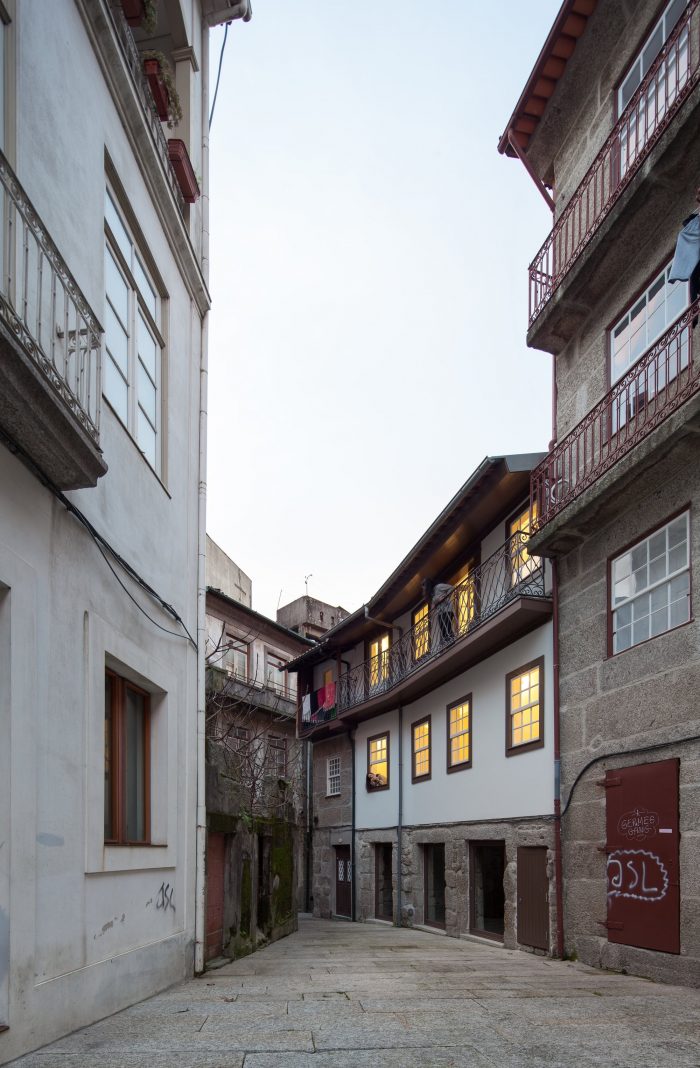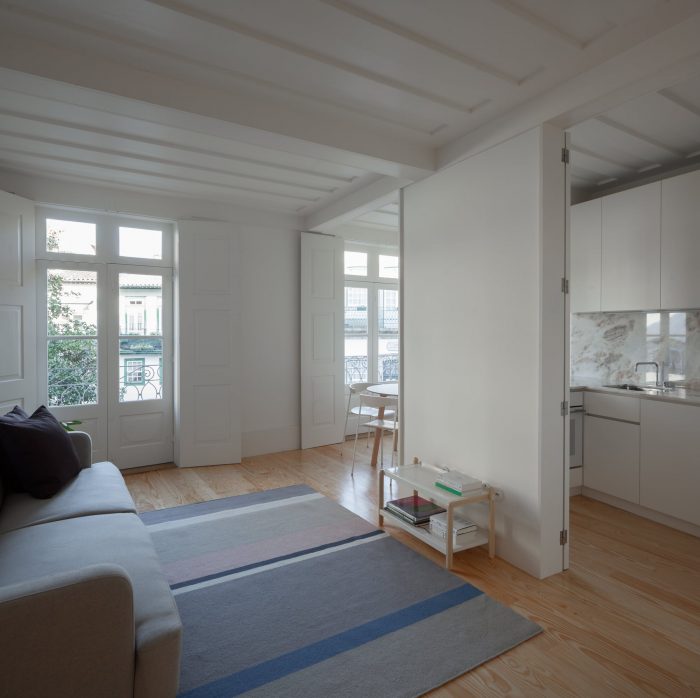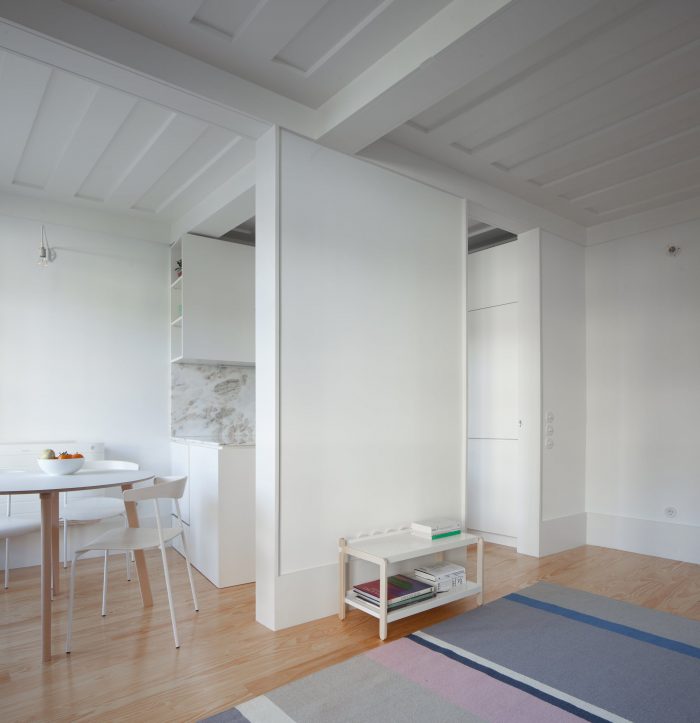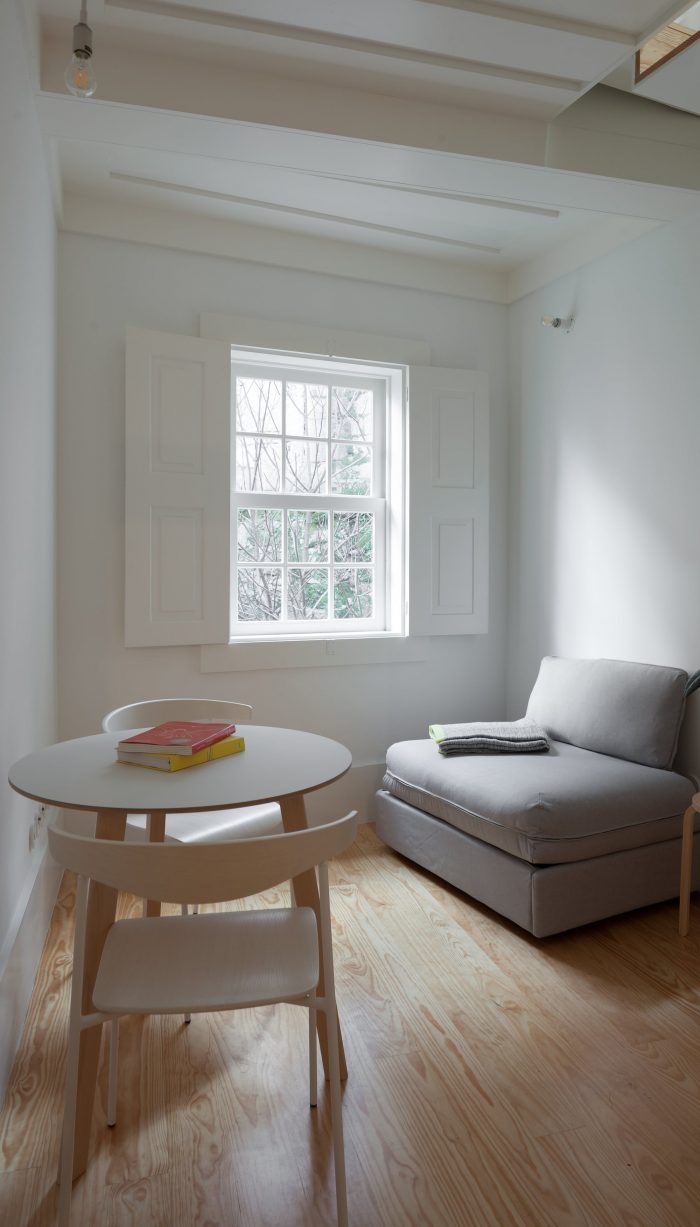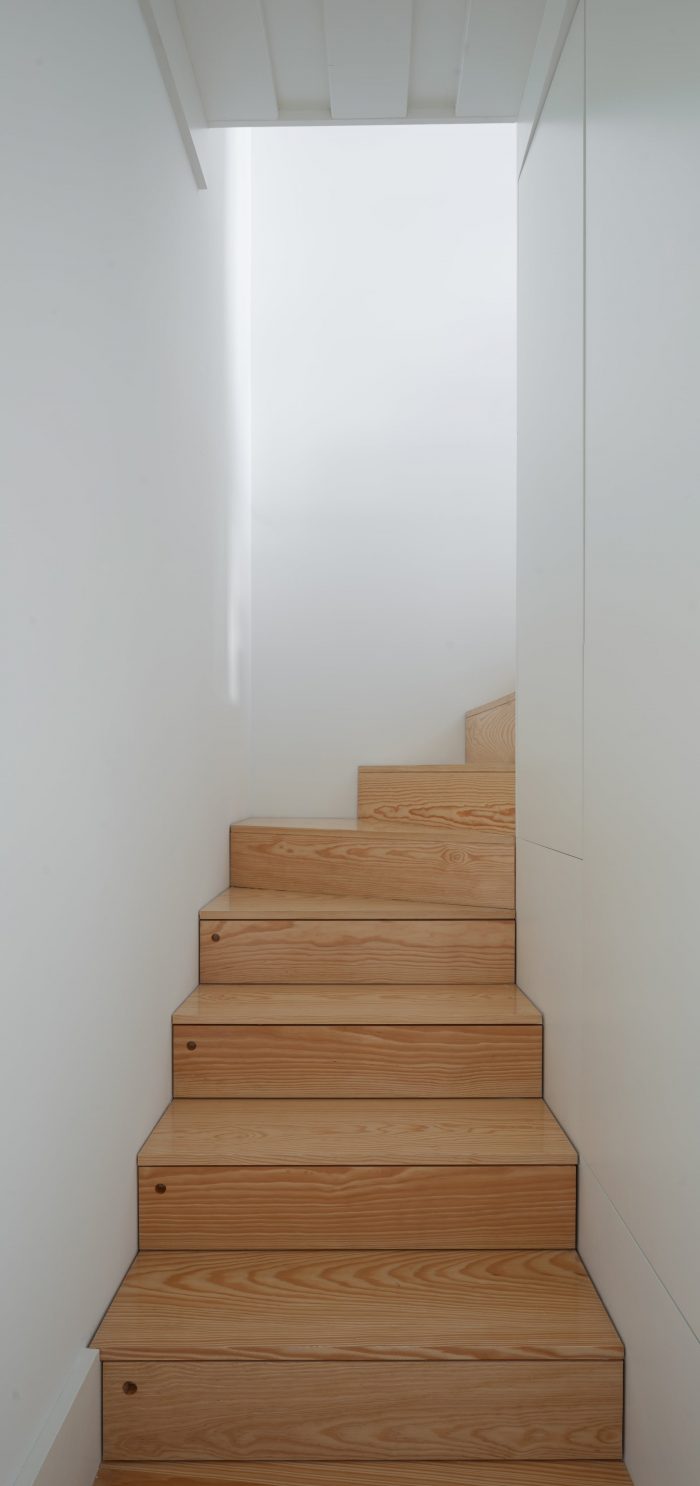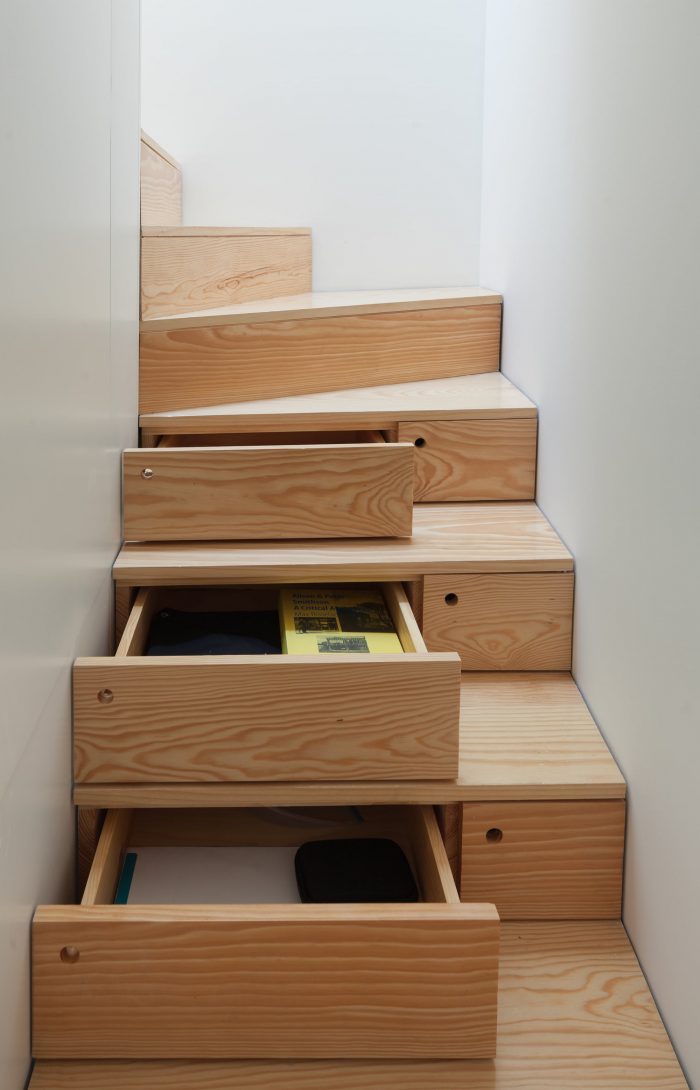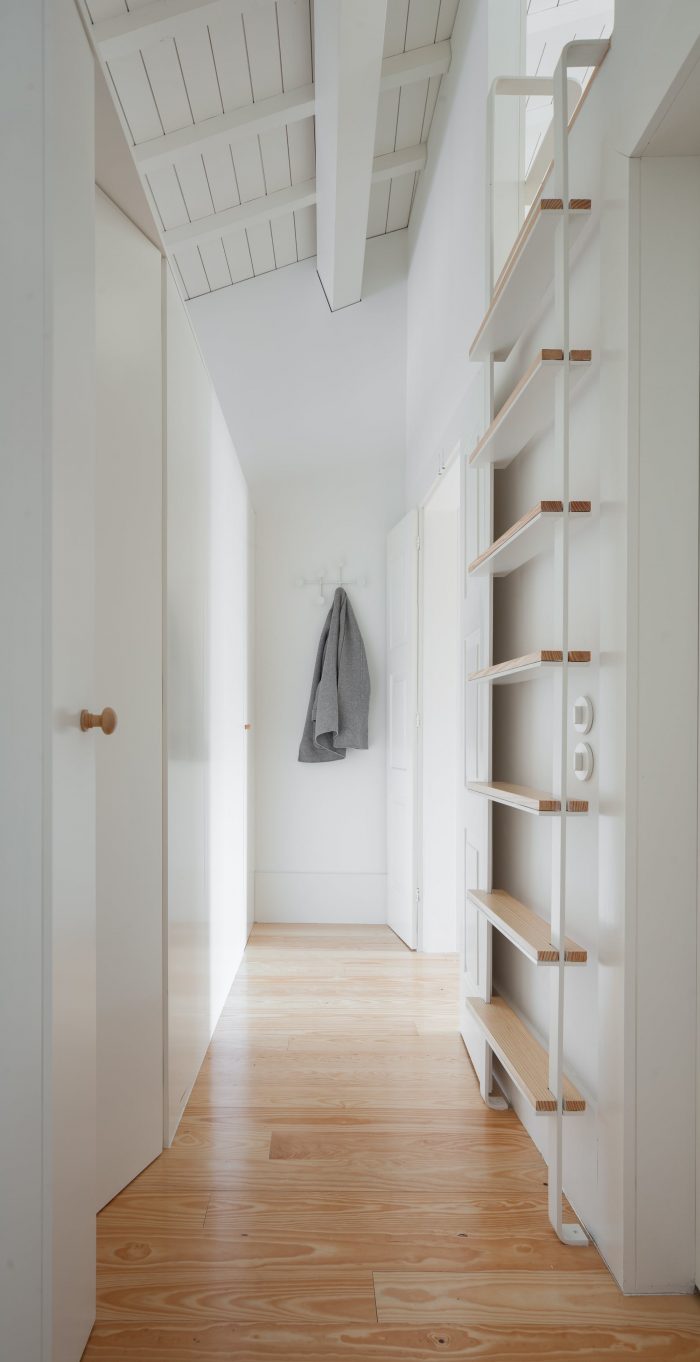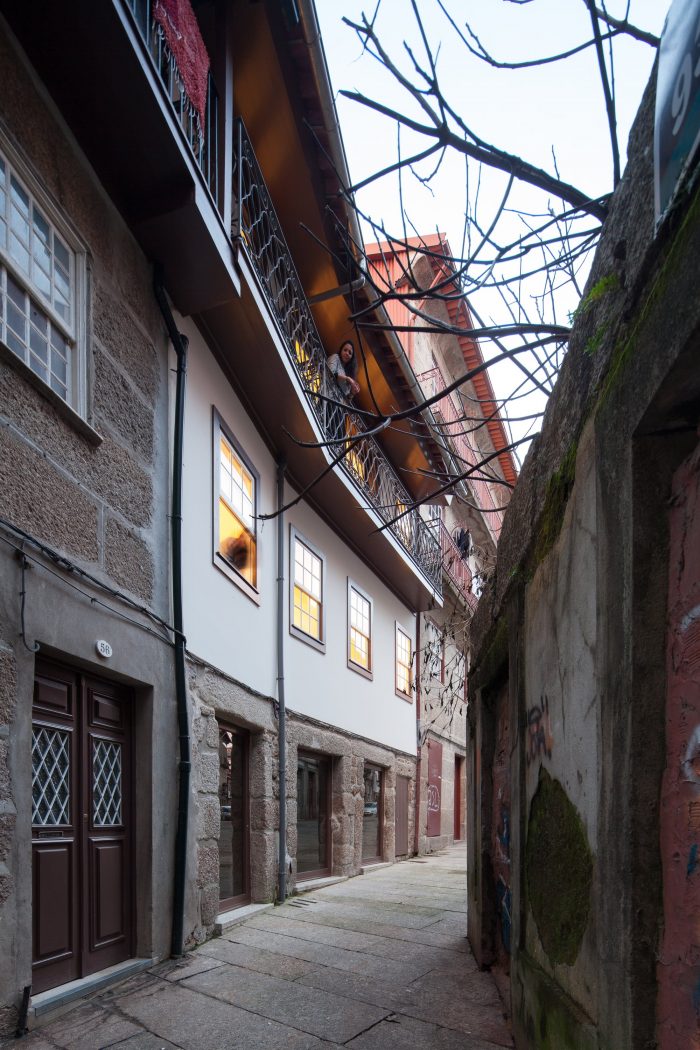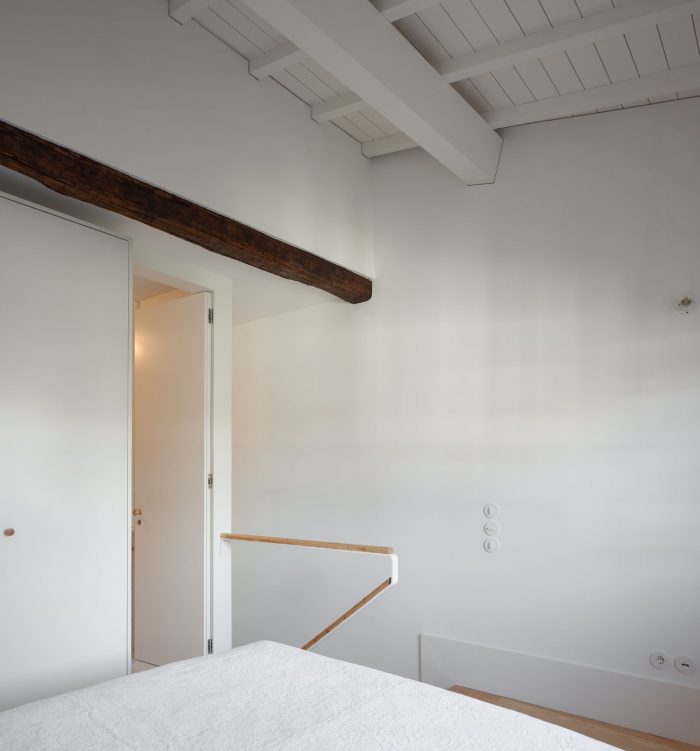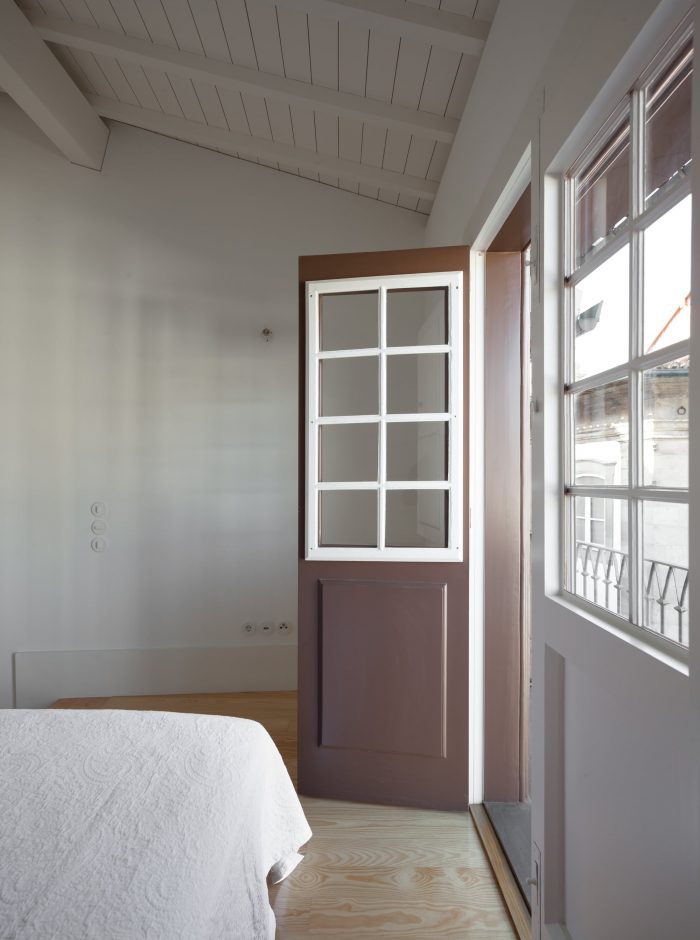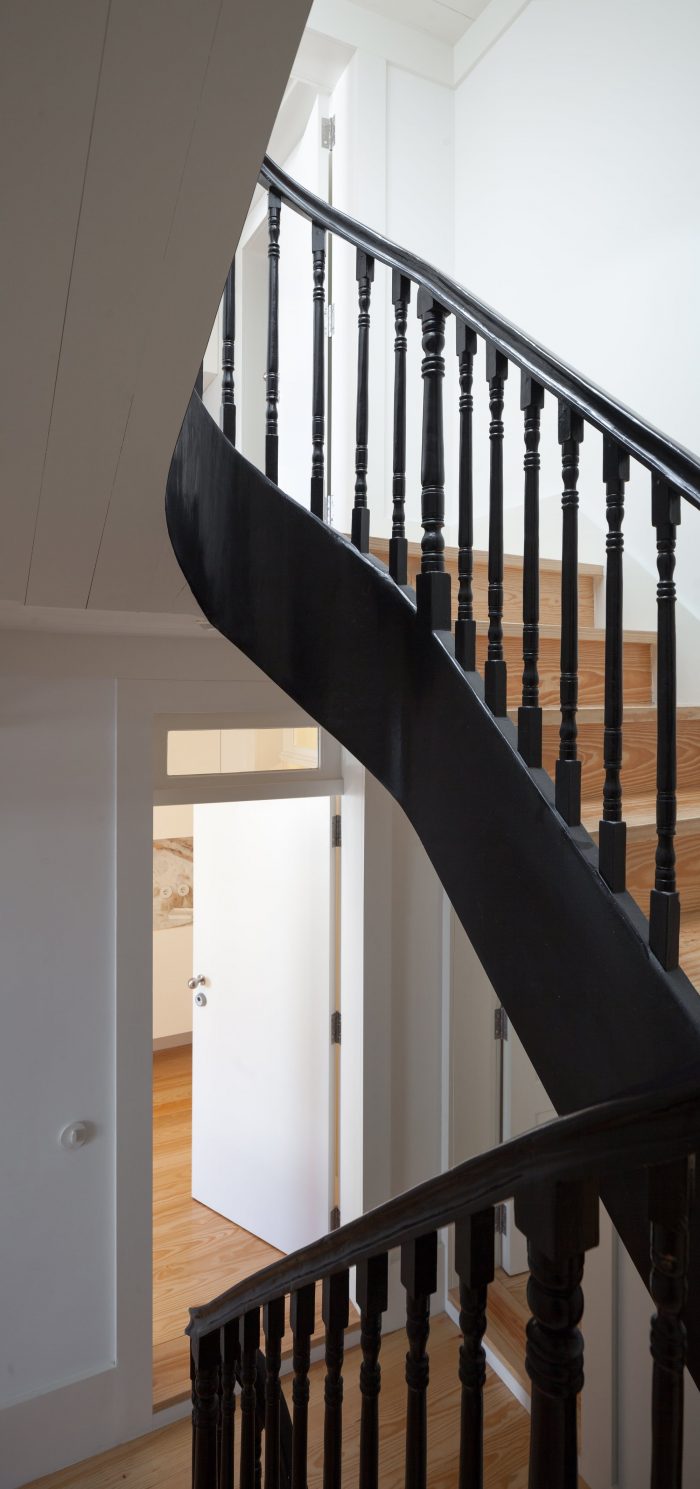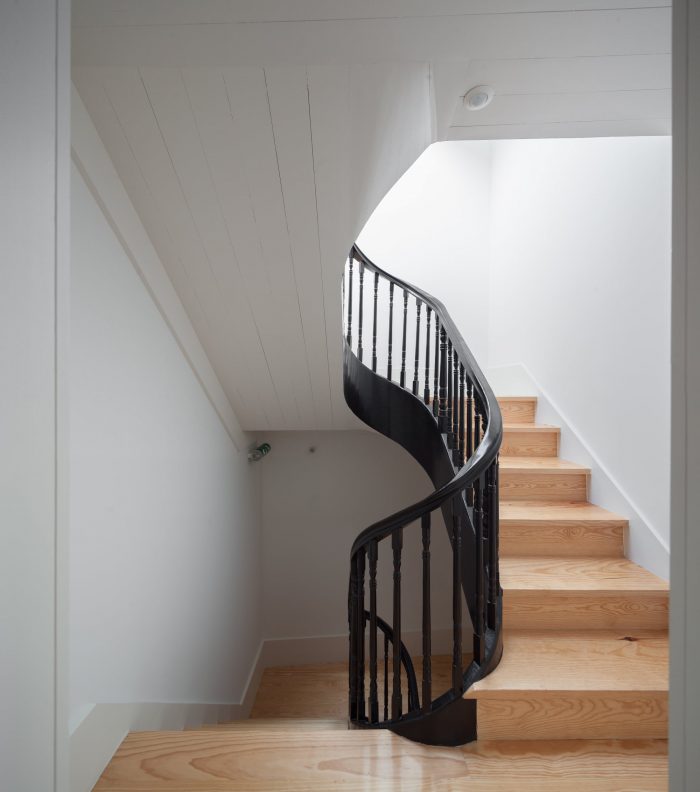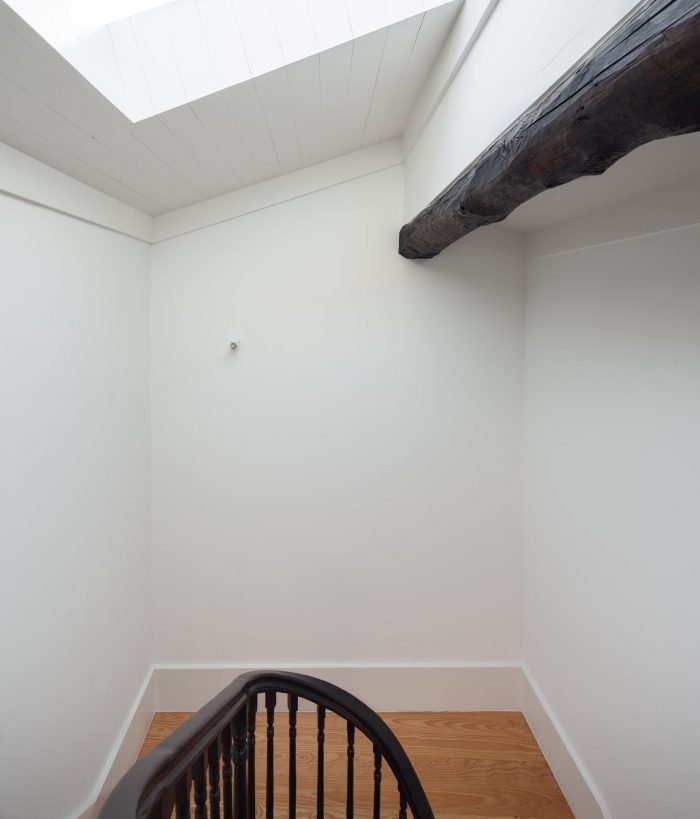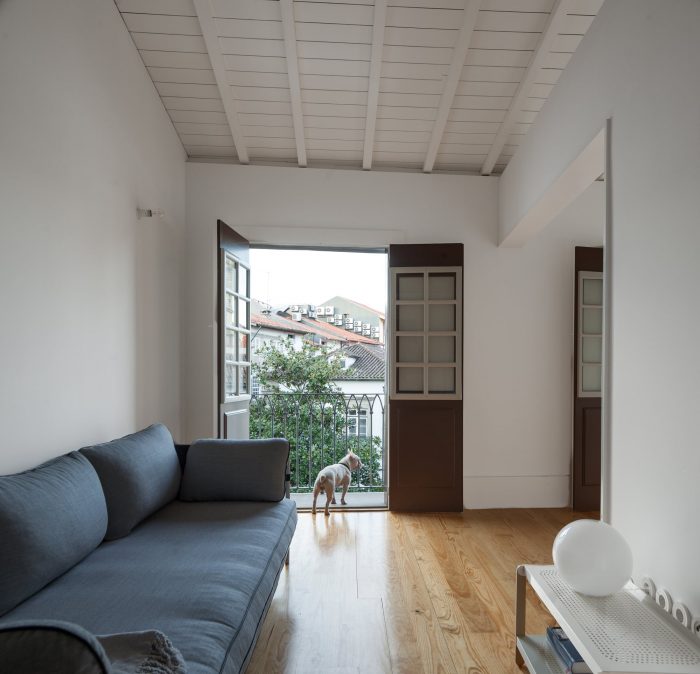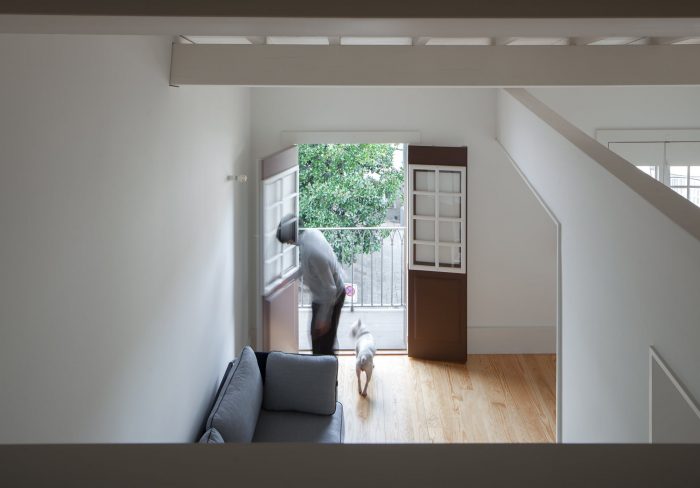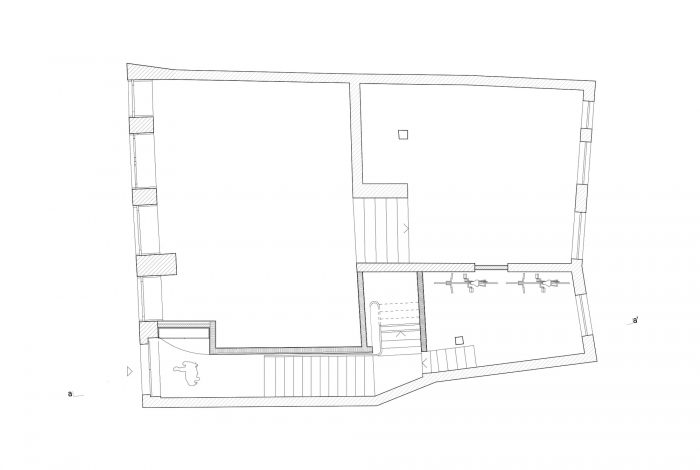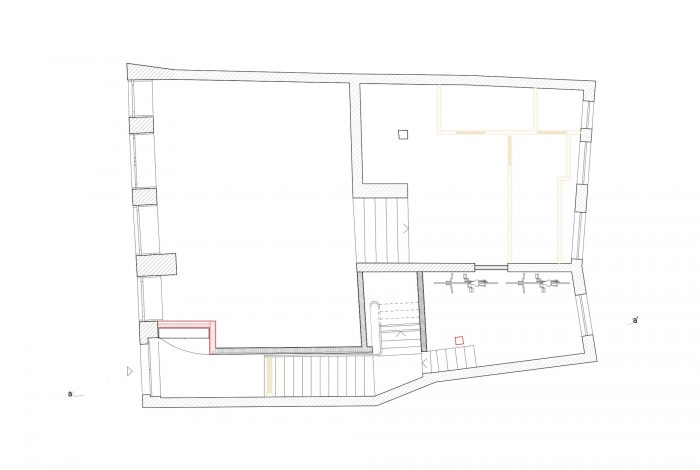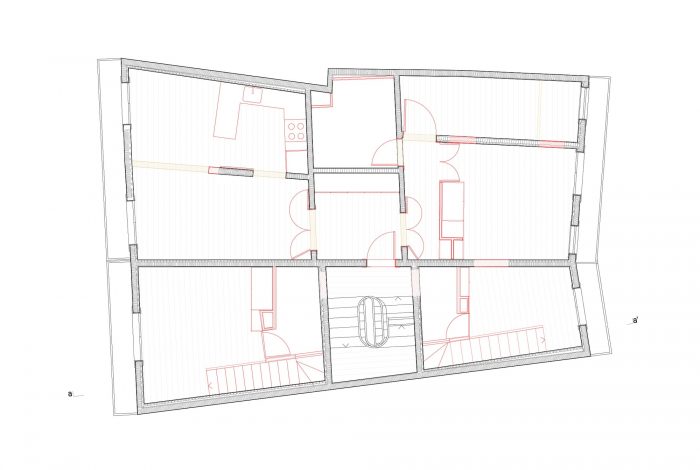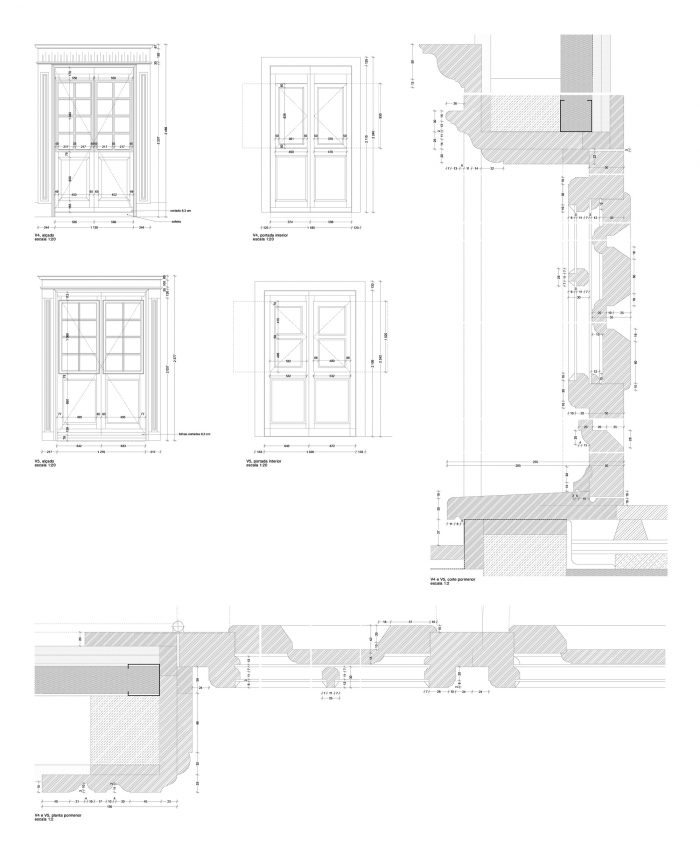在过去的几十年里,这栋位于吉马良斯历史中心的阿维利诺-杰曼诺博士街的建筑是一个荒凉的建筑,从中只留下了一个古老的纱厂的记忆,”casa lany”,它把上面的楼层用作仓库。
For the last few decades, this building on Dr. Avelino Germano street, in Guimarães historical centre, was a desolate construction, from which remained only the memory of an old yarn store, “casa lany”, which used the upper floors as storage.
从1569年的古地图的解释中,我们可以清楚地看到,该地块的占用可以追溯到城市的建立,古代的 “Vila Baixa”,后来被命名为Vila de Santa Maria de Oliveira。
From the interpretation of the 1569 ancient map, it becomes clear that the occupation of the plot dates back to the foundation of the city, the ancient “Vila Baixa”, later named Vila de Santa Maria de Oliveira.
干预的目的是重新规划这栋建筑,将其更新到当前的标准,同时恢复其原来的程序,商店的上层是住宅。
The intervention intended to reprogram this building, updating it to current standards while returning to its original program, store with dwellings on the upper floors.
该建筑的特点是纵向承重墙的存在,将其分为两部分。后面立面的轻微弯曲和主立面阳台的分割强调了这种分割,这似乎指向了以前两个独立房屋的存在。这个传统的建筑元素–木头和砖墙–暗示了上层的新的空间配置:两个公寓在北面,两个复式公寓在南面。通过这种方式,干预措施试图尊重该建筑的原始结构前提。
The building is characterized by a presence of longitudinal bearing wall, which divides it in two parts. A division emphasized by a slight bend in the back facade and the splitting of the balconies of the main facade, that seems to point towards the existence of two previously separate houses. This constructive element, of traditional genesis – a wood and brick wall – suggested the new spatial configuration on the upper floors: two apartments on the north part, and two duplex apartments, on the south part. In this way, the intervention tried to respect the original constructive premisses of the building(s).
修复工作采用了传统的建筑方法:恢复和加固现有的木头、石头和砖头结构;赋予现有的地板和墙壁更好的热和声学性能;保持门窗和其他结构或装饰元素,这些都是房子历经多个时期的见证;并按照费尔南多-塔沃拉的指导方针,在城市的历史中心设置使用的颜色。
The rehabilitation was conducted grasping and adapting traditional building methods: recovering and reinforcing the existing wood, stone and brick structure; endowing the existing floors and walls with a better thermal and acoustic behaviour; maintaining windows, doors and other structural or ornamental elements that are a testimonial of the multiple periods that the house outlived; and setting the used colors following Fernando Távora’s guidelines for intervening in the historical centre of the city.
在这个修复过程中,没有引入或拆除墙壁,只有新的门和窗户被重新定位。在这种类型的建筑恢复中,这是一个历史上常见的程序。引入的新元素,如家具和金属楼梯,有助于重新配置空间和适应新的基础设施,赋予旧的隔间以新的用途和新的舒适。
During this rehabilitation no walls were introduced or demolished, only new doors and windows were repositioned. A historical and common procedure in this type of buildings recovering. The new elements that were introduced, such as furniture and metal staircases helped to reconfigure the space and to adapt new infraestructures, conferring the old compartments new uses and renewed comfort.
这样,我们试图像一个侦探或考古学家一样工作,继续并尊重环境和现有的主要特征,这规范了建筑的实现,但也有助于以一种简单和类似的方式保持这个几乎是神话般的地方的进化记忆。
This way, we tried to work almost like a detective or archeologist, to continue and respect the circumstance and the main existent characteristics, which regulated the building actualization, but also helped to maintain in a simple and analogous way the evolutive memory of that almost mythic place.
Arquitetos: Merooficina
Area : 3659 ft²
Year : 2018
Photographs :José Campos
Manufacturers : Hager, Osvaldo Matos, Robbialac, Umbelino Monteiro, Fermax
Lead Architects : Catarina Ribeiro, Vitório Leite
Specialties : Sofia Araújo, Pedro Ferreira, Bruno Navio; Construção: Graum – grau máximo construções, lda
City : Guimarães
Country : Portugal

